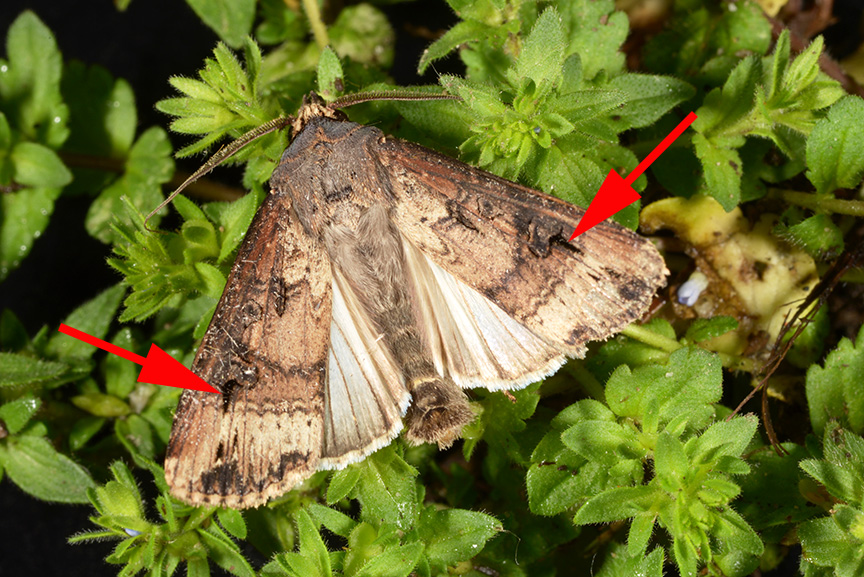For the last couple of weeks, storms originating in the Southwestern U.S. have effectively “vacuumed up” black cutworm (BCW) moths and deposited them, along with rainfall, in the Midwest. The first recorded moth capture was March 20, but many followed with subsequent storm fronts. This is an annual event, although the timing varies. We replenish our BCW numbers annually; they cannot overwinter in Indiana and are not cold hardy.
Often, we will receive freezing temperatures following these early spring flushes. Many BCW that have arrived in mid or late March often likely perish during these cold spells. But they will keep filtering in over the coming weeks, and there are certain to be sufficient moths to lay eggs in the many winter-annual weeds (particularly broad-leaf weeds, chickweed is a favorite) and broad-leaved cover crops.
In the near future, we will publish color-coded maps with BCW anticipated development to help you time your scouting trips. As a reminder, the cutworm threat will be greatest when there is a “green bridge” for them – shifting from weeds and/or cover crops to seedling corn as it emerges. We recognize that this is often (usually) unavoidable, but still worth mentioning. BCW larvae cannot go long without feeding, so a period with no host plant material will often mean death by starvation.
The following NOAA outlook map, issued on April 2, 2024, graphically shows the origins in the Gulf States and fanning out through the Midwest:




